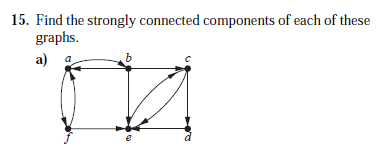The answers listed strongly connected components in this graph. But the textbook said a strongly connected component is a strongly connected subgraph of the directed graph but not contained in larger strongly connected subgraphs.
I do not see how the subgraph of this graph is strongly connected because the textbook said strongly connected means there is a path from vertices a to b. But there is no such thing because the directed edges clearly shows that.





